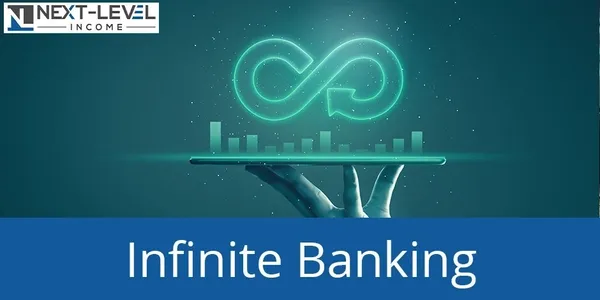All Categories
Featured
Table of Contents
Okay, to be reasonable you're really "financial with an insurer" instead of "financial on yourself", yet that principle is not as simple to offer. Why the term "limitless" financial? The idea is to have your cash operating in several places at the same time, rather than in a single place. It's a little bit like the idea of acquiring a residence with cash money, then borrowing against the house and putting the cash to operate in another financial investment.
Some individuals like to discuss the "speed of money", which generally indicates the exact same point. In truth, you are simply optimizing leverage, which functions, however, of course, works both means. Frankly, all of these terms are rip-offs, as you will certainly see listed below. Yet that does not indicate there is absolutely nothing worthwhile to this idea once you get past the advertising and marketing.
The entire life insurance policy industry is pestered by overly costly insurance policy, large compensations, questionable sales techniques, low prices of return, and improperly informed customers and salespeople. Yet if you want to "Rely on Yourself", you're going to need to fall to this industry and actually purchase whole life insurance coverage. There is no substitute.
The assurances inherent in this item are essential to its function. You can borrow against most kinds of money worth life insurance, yet you should not "financial institution" with them. As you acquire a whole life insurance coverage policy to "financial institution" with, remember that this is an entirely separate area of your monetary plan from the life insurance coverage area.
Purchase a large fat term life insurance coverage policy to do that. As you will certainly see below, your "Infinite Banking" plan really is not going to reliably provide this vital financial feature. Another trouble with the fact that IB/BOY/LEAP counts, at its core, on an entire life plan is that it can make buying a plan problematic for many of those interested in doing so.
Bank On Yourself Program
Dangerous pastimes such as SCUBA diving, rock climbing, sky diving, or flying likewise do not blend well with life insurance policy products. The IB/BOY/LEAP advocates (salespeople?) have a workaround for youbuy the policy on someone else! That might function out fine, considering that the point of the policy is not the fatality benefit, yet bear in mind that purchasing a plan on small youngsters is a lot more expensive than it should be since they are typically underwritten at a "common" price instead than a chosen one.

Most plans are structured to do one of two points. The payment on a whole life insurance coverage plan is 50-110% of the initial year's premium. In some cases plans are structured to optimize the fatality benefit for the costs paid.
With an IB/BOY/LEAP policy, your goal is not to maximize the survivor benefit per buck in costs paid. Your objective is to take full advantage of the cash money value per buck in costs paid. The rate of return on the plan is extremely vital. Among the most effective methods to make best use of that aspect is to obtain as much cash as feasible right into the policy.
The very best method to boost the rate of return of a policy is to have a relatively tiny "base plan", and after that put even more cash money into it with "paid-up additions". Rather of asking "Just how little can I put in to obtain a specific survivor benefit?" the question ends up being "Just how much can I lawfully took into the policy?" With more cash money in the plan, there is even more money value left after the prices of the fatality benefit are paid.
An additional benefit of a paid-up addition over a normal costs is that the payment rate is lower (like 3-4% as opposed to 50-110%) on paid-up enhancements than the base plan. The much less you pay in commission, the greater your rate of return. The rate of return on your cash money value is still mosting likely to be negative for a while, like all money value insurance plan.
Yet it is not interest-free. In fact, it may cost as long as 8%. The majority of insurer just use "straight recognition" fundings. With a direct acknowledgment funding, if you borrow out $50K, the reward rate put on the cash worth yearly only relates to the $150K left in the policy.
Personal Banking Concept
With a non-direct recognition finance, the business still pays the same dividend, whether you have "borrowed the cash out" (technically versus) the plan or otherwise. Crazy? Why would they do that? That recognizes? But they do. Typically this feature is paired with some much less helpful facet of the plan, such as a reduced reward price than you could obtain from a plan with straight acknowledgment financings (infinite banking with whole life insurance).
The business do not have a source of magic free cash, so what they give up one location in the plan should be drawn from one more place. If it is taken from a function you care much less about and put right into an attribute you care more about, that is an excellent point for you.
There is another important feature, generally called "laundry finances". While it is wonderful to still have rewards paid on cash you have gotten of the policy, you still have to pay rate of interest on that particular car loan. If the returns price is 4% and the financing is billing 8%, you're not specifically coming out in advance.
With a clean financing, your car loan rates of interest is the same as the returns rate on the policy. While you are paying 5% rate of interest on the funding, that rate of interest is entirely offset by the 5% dividend on the funding. So in that respect, it acts much like you withdrew the money from a financial institution account.

5%-5% = 0%-0%. Same same. Therefore, you are now "banking on yourself." Without all three of these factors, this policy merely is not mosting likely to work effectively for IB/BOY/LEAP. The largest concern with IB/BOY/LEAP is individuals pushing it. Nearly all of them stand to benefit from you buying into this concept.
In truth, there are numerous insurance coverage representatives chatting regarding IB/BOY/LEAP as a function of whole life who are not in fact offering policies with the required features to do it! The issue is that those who know the idea best have a massive conflict of rate of interest and generally inflate the advantages of the concept (and the underlying plan).
Become Your Own Bank Whole Life Insurance
You need to compare loaning against your policy to withdrawing cash from your cost savings account. Return to the beginning. When you have nothing. No deposit. No cash in financial investments. No cash in money value life insurance coverage. You are confronted with an option. You can place the money in the financial institution, you can invest it, or you can purchase an IB/BOY/LEAP plan.
You pay tax obligations on the passion each year. You can conserve some even more cash and placed it back in the banking account to begin to earn interest again.
It expands for many years with funding gains, rewards, rents, and so on. Some of that earnings is tired as you accompany. When it comes time to get the watercraft, you market the investment and pay taxes on your long-term resources gains. After that you can save some even more money and get some more investments.
The cash value not utilized to pay for insurance and compensations grows over the years at the reward price without tax drag. It begins with adverse returns, however with any luck by year 5 or two has actually damaged even and is expanding at the reward price. When you most likely to acquire the boat, you obtain versus the plan tax-free.
How To Use Life Insurance As A Bank
As you pay it back, the money you paid back starts expanding once more at the dividend rate. Those all work rather similarly and you can contrast the after-tax prices of return.
They run your debt and give you a finance. You pay passion on the borrowed cash to the bank until the car loan is settled. When it is repaid, you have a virtually worthless watercraft and no cash. As you can see, that is nothing like the very first three choices.
Latest Posts
'Be Your Own Bank' Mantra More Relevant Than Ever
My Own Bank
Become Your Own Banker Whole Life Insurance